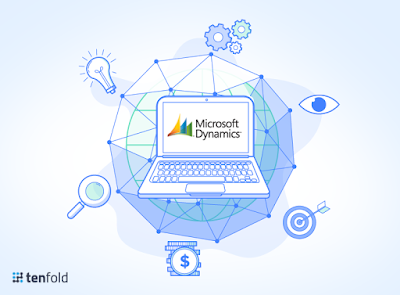How to Integrate Microsoft Dynamics with Your Phone Through CTI?
With more than 40,000 companies and 4.4 million users utilizing Microsoft Dynamics CRM, it is evident that the benefits of the suite are plentiful. From offering real-time visibility and analytics to track performance to providing a way for companies to manage their cash, assets, budgets, and banking, the enterprise planning solution helps small and medium businesses function optimally.
Before deciding to purchase the program, however, many companies are left to question the Microsoft Dynamics CRM’s integration capabilities — specifically, whether the Microsoft Dynamics CTI integration is user-friendly. After all, businesses recognize that seamless connectivity leads to better returns, increased customer insights, and improved customer satisfaction.
Fortunately, there are third-party service providers that have partnered with Microsoft to offer solutions.
The Integration Challenge
Companies often employ two systems to make their businesses operate smoothly — a Client Relationship Management system (CRM) and an Enterprise Resource Planning (ERP) system.
A CRM system handles the frontend information, such as managing customer information and then improving it with marketing and customer service. An ERP system, such as Microsoft Dynamics, deals with the backend information; that is, the information generated once a customer places an order. Examples include billing and shipping details, purchase history, financial information, and accounting details.
While both a CRM and an ERP system are integral to operations, they tend to function in a silo — thus, apart from one another. Their differing structures make it challenging to integrate the two. The solution most often cited is a custom point-to-point integration model. However, this approach can be touchy, expensive, and difficult to maintain.
Another approach to integration mandates that an individual manually retrieves data from one system and enters it into another. Not only is this time consuming, but it is prone to errors and requires considerable human resources. Some businesses circumvent these hiccups by employing a data loader, though such an option is limited.
Without a seamless integration method, employees wind up spending a lot of time retrieving data from different sources. This, of course, leads to an inefficient workspace.
Advantages of CTI Integration
Integration improves work capacity by providing businesses with more information before answering a call and more options, whether receiving an inbound call or making an outbound call. Moreover, all calls are recorded so that they can be analyzed later.
Other advantages include:
Caller identification for inbound calls
All of the pertinent information available on one screen
Easy access to relevant notes
Better call management means improved customer service
Technology and Tools
Microsoft Dynamics CRM is not Telephony Application Program Interface natively compliant. Fortunately, a variety of third-party vendors have developed solutions that can be anchored to perform the following:
Make an outbound call from within the program;
Send and receive faxes;
Recognize an inbound call and automatically open the relevant information from Microsoft Dynamic CRM;
Record and playback.
To enable phone integration for both inbound and outbound calls, the following is required:
A phone system that supports computer telephony integration (SIP, TAPI, CTI). Most contemporary phone systems have this capability. If necessary, the software can run on a user’s PC or a server; alternatively, some suppliers offer proprietary interfaces.
A link with the CRM. This is the software that connects Microsoft Dynamics CRM with the phone system. Most often, phone system manufacturers provide this software. If this isn’t the case, a person can build their own.
Third-Party Providers
Several telephone manufacturers have paired with Microsoft to offer solutions unique for their phone systems that provide alternative solutions for integration with Microsoft Dynamics. Several of these include:
CTI 360
One third-party option for integration is CTI 360. It enables communication between phone systems (Skype, TAPI Interface, OCS, Lync) and Microsoft Dynamics CRM. With it, businesses can readily see the name and number of inbound callers, automatically produce actions for both inbound and outbound calls, and view customized caller data. Upon lifting the earphone, users have immediate access to a contact or an account.
MuleSoft
MuleSoft features two solutions that assist businesses in integrating their CRM and ERP systems. It provides on-site connectivity and connectivity in the cloud. By doing so, businesses can automate processes and create uninterrupted connectivity. It also synchronizes data so that users can enjoy an updated customer database whenever changes are made.
Unified Service Desk
One method of Microsoft Dynamics Integration is to use an adaptor with Unified Service Desk. The User Interface Integration CTI framework has components that can be used to build a CTI adapter.
There are two types of CTI adapters:
CTI Desktop Manager
This type of CTI adapter involves selecting a CTI Desktop Manager component with the necessary telephony actions that can communicate with the CTI system. Once chosen, a user must configure it as a CTI Desktop Manager type of hosted control. This allows clients to deal with the interpretation of requests from a CTI system, and then route it appropriately.
Building from components
The second type of adapter entails building all the components of a CTI adapter from the ground up where the user can define how to connect to a CTI system (CTI Desktop Manager), how the calls and agent states will be managed (CTI Desktop Manager), and the look and feel of a particularly softphone (CTI Controls). This type of adapter is best if the CTI system uses a service-based polling program or uses a callback/event notification system.
Using the generic listener adaptor in Unified Service Desk
Unified Service Desk provides a generic listener adapter that can be used for Dynamics CRM integration. It listens for an HTTP request on a familiar port and then works by pulling a query string from the URL. It then takes those values and determines that there is a CTI event, which triggers a CTI pop-up in Unified Service Desk. As soon as the adapter starts listening on the specified port, it waits for the CTI middleware to open a URL.
How to configure the CTI Desktop Manager for generic listener adapter
When using the generic listener adapter, users can ignore the CTI control and CTI connector. The only component that must be configured is the CTI Desktop Manager. It should be placed on a HiddenPanel with the following standard values for the generic listener adapter in the hosted control configuration page:
Assembly Type: Microsoft.Crm.UnifiedServiceDesk.GenericListener.DesktopManager
Assembly URI: Microsoft.Crm.UnifiedServiceDesk.GenericListener
Building a custom CTI adapter
Alternately, users can build a custom CTI adapter for Microsoft Dynamics CTI. To craft a custom CTO adapter:
Create the connection bridge to the CTI system.
Create a CTI manager that communicates with both the CTI connection layer and Unified Service Desk to manage calls.
Define the user interface or the controls on the agent desktop that helps in call management and displays the agent state.
Integrating Microsoft Dynamics with CTI is an invaluable process. Seamless connectivity makes information more readily available, thereby providing better customer insight and ushering in better customer service. By integrating Microsoft Dynamics with a phone system, businesses can automate business processes, increase the return on investment, and improve productivity. There are numerous out-of-the-box, single platform solutions to help.
https://www.tenfold.com/cti/integrate-microsoft-dynamics-phone-cti





Great post! Thanks you so much for the share. Keep up the Excellent work, we look forward to reading more from you in the future!
ReplyDeleteschool app india